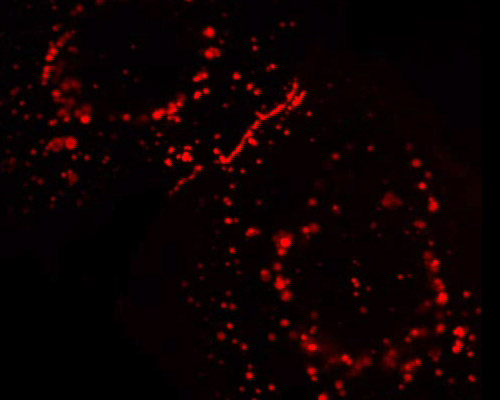Human Cervix Adenocarcinoma Cells with mRuby-CX26

A human cervix adenocarcinoma cell (the HeLa line) is part of an immortal cell line heavily used in scientific research. It is one of the oldest and most frequently used human cell lines. Derived from cervical cancer cells taken from Henrietta Lacks, a patient who eventually died of her cancer on October 4, 1951, this was the first human cell line to thrive in vitro. HeLa cells were utilized by J. Salk to test the first polio vaccine in the 1950's. From that time on, HeLa cells have been used for cancer and AIDS research among other pursuits.
Connexins are proteins that primarily function in the formation of gap junctions, which are small intercellular channels that directly connect the cytoplasm of neighboring cells. Gap junctions provide ions and small molecules a means of free passage between cells. Connexins exhibit a relatively short lifespan, resulting in a dynamic cycle of connexin synthesis and replacement. The connexin Cx26 is produced from the gap junction beta 2 gene. Mutations of Cx26 are a common cause of hereditary deafness.
The red fluorescent protein mRuby fused to Cx26 was employed to visualize gap junctions in the human adenocarcinoma cells shown in the digital video sequence presented in this section. A derivative of eqFP611, mRuby is one of the brightest monomeric red fluorescent proteins developed to date. The brightness of mRuby is 17 percent greater than EGFP. Peak excitation and emission of mRuby occur at 558 and 605 nanometers, respectively.



